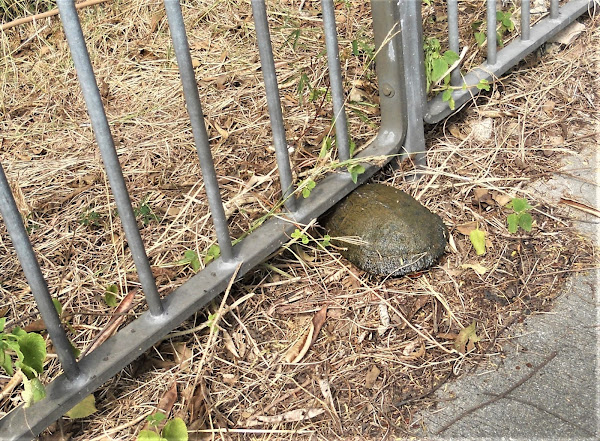I usually have a few subjects in mind that I intend to write about eventually, but it sometimes happens that when I wake up in the morning, I have no idea that by the end of the day I will have a readymade subject for my next post (recent examples include Fish out of Water, Hidden History #3, Down by the Riverside and Boardom). It happened again yesterday, when Paula and I were out cycling.
Since the ‘closed area’ status of ‘the frontier road’ was removed in 2013, we’ve cycled along this scenic route dozens of times, but there was an obvious limit to how far west we could go, because it eventually reaches a road that leads to the Lok Ma Chau crossing point into China. And this road carried a lot of taxis, minibuses and tour buses travelling at high speed, making it too dangerous to venture onto on a bike.
However, this border crossing has been closed since the beginning of the coronavirus pandemic, and this has allowed us to cycle further west, at least as far as San Tin. And as part of this extended excursion, we also cycle down Tun Yu Road, even though it’s a dead end:
This is an unmanned—and apparently seldom used—crossing point into China. In fact, the road carries very little traffic and is a relaxing diversion. And there is one point of interest: about 100 metres before we reach the gate, there is a footbridge across a river that runs alongside the road (which is hidden on the right in the next photo). Access to this footbridge appeared to be blocked by a gate, but on one occasion recently I noticed that the gate was ajar, so of course we stopped to take a closer look:
This is a view of the river, looking upstream. There is an inflatable dam directly below the footbridge, so a lot of floating vegetation has backed up behind it. I refer to this vegetation as ‘water hyacinths’, which may not be an accurate identification, but the flowers certainly look like hyacinths to me:
Anyway, we were cycling quite rapidly—‘leisurely’ does not exist in my cycling lexicon—down the section shown in this photo:
Paula suddenly braked sharply.
“Tortoise!” she shouted.
I’d already noticed what I’d assumed was merely a large animal turd and, because I was close behind her at the time, complained that I’d just left ten dollars’ worth of rubber on the road.
Anyway, having stopped, I thought that we might as well take a closer look (and a few photographs):
“Look!” I said. “There’s another one.”
It appeared to be stuck under the railing:
Meanwhile, the first tortoise had decided to move:
I didn’t think it could negotiate the kerb:
…but it had absolutely no trouble doing so:
And it ‘quickly’ joined its companion:
And that’s where we left them.
I included two photos of tortoises in Photographic Highlights 2019–20: Part 2, so when I came home, I decided to consult the website of the Agriculture, Fisheries and Conservation Department, where I was able to download a list of all the reptiles that are indigenous to Hong Kong. Tortoises are not on that list, so these two animals are the descendants of pets that have been released into the wild, which I’d conjectured was the case with respect to the creatures I’d photographed last winter.
Thursday, 5 November 2020
Subscribe to:
Post Comments (Atom)

















There are surprises found, although not in every trip out!!!
ReplyDeleteIt does happen quite often though!
Delete